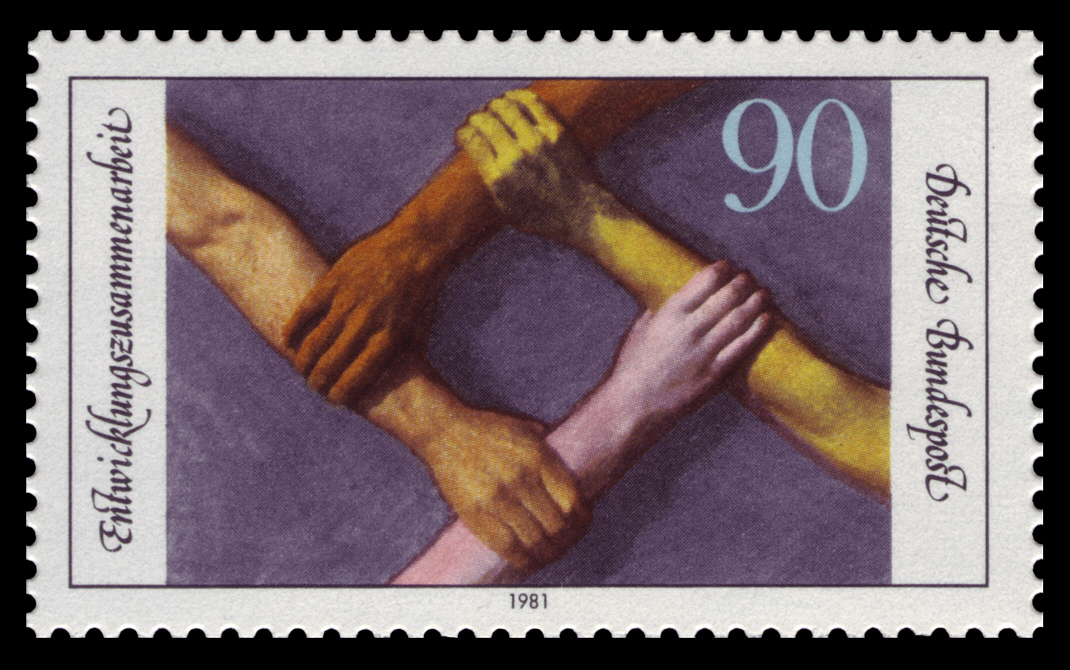Souvenir Sheet: The global goals for sustainable development (3) (Papua New Guinea 2017)
The global goals for sustainable development (3) (Papua New Guinea 2017)
04 December (Papua New Guinea ) within release Chairmanship of the Asia Pacific Economic Cooperation (APEC) goes into circulation Souvenir Sheet The global goals for sustainable development (3) face value 20 Papua New Guinean kina
| Souvenir Sheet The global goals for sustainable development (3) in catalogues | |
|---|---|
| Colnect codes: | Col: PG 2017-09SS2 |
Souvenir Sheet is horizontal format.
Also in the issue Chairmanship of the Asia Pacific Economic Cooperation (APEC):
- Stamp - Global goals for sustainable development - Partnership face value 6.80;
- Stamp - Global goals for sustainable development - Planet face value 1.50;
- Mini Sheet - The global goals for sustainable development (1) face value 12.45;
- Stamp - Global goals for sustainable development - Prosperity face value 3.40;
- Stamp - Global goals for sustainable development - Peace face value 3.40;
- Souvenir Sheet - The global goals for sustainable development (3) face value 20;
- Stamp - Global goals for sustainable development - People face value 75;
- Stamp - Global goals for sustainable development - APEC face value 6.80;
- Souvenir Sheet - The global goals for sustainable development (2) face value 20;
Souvenir Sheet The global goals for sustainable development (3) it reflects the thematic directions:
Development aid is a type of foreign/international/overseas aid given by governments and other agencies to support the economic, environmental, social, and political development of developing countries. Closely related concepts include: developmental aid, development assistance, official development assistance, development policy, development cooperation and technical assistance. It is distinguished from humanitarian aid by aiming at a sustained improvement in the conditions in a developing country, rather than short-term relief. Development aid is thus widely seen as a major way to meet Sustainable Development Goal 1 (end poverty in all its forms everywhere) for the developing nations.
An economy is an area of the production, distribution and trade, as well as consumption of goods and services. In general, it is defined as a social domain that emphasize the practices, discourses, and material expressions associated with the production, use, and management of resources. A given economy is a set of processes that involves its culture, values, education, technological evolution, history, social organization, political structure, legal systems, and natural resources as main factors. These factors give context, content, and set the conditions and parameters in which an economy functions. In other words, the economic domain is a social domain of interrelated human practices and transactions that does not stand alone.
A flag is a piece of fabric (most often rectangular or quadrilateral) with a distinctive design that is used as a symbol, as a signaling device, or as decoration. The term flag is also used to refer to the graphic design employed, and flags have since evolved into a general tool for rudimentary signalling and identification, especially in environments where communication is similarly challenging (such as the maritime environment where semaphore is used). National flags are patriotic symbols with varied wide-ranging interpretations, often including strong military associations due to their original and ongoing military uses. Flags are also used in messaging, advertising, or for other decorative purposes. The study of flags is known as vexillology, from the Latin word vexillum, meaning flag or banner.
A map is a symbolic depiction emphasizing relationships between elements of some space, such as objects, regions, or themes. Many maps are static, fixed to paper or some other durable medium, while others are dynamic or interactive. Although most commonly used to depict geography, maps may represent any space, real or imagined, without regard to context or scale, such as in brain mapping, DNA mapping, or computer network topology mapping. The space being mapped may be two dimensional, such as the surface of the earth, three dimensional, such as the interior of the earth, or even more abstract spaces of any dimension, such as arise in modeling phenomena having many independent variables. Although the earliest maps known are of the heavens, geographic maps of territory have a very long tradition and exist from ancient times. The word "map" comes from the medieval Latin Mappa mundi, wherein mappa meant napkin or cloth and mundi the world. Thus, "map" became the shortened term referring to a two-dimensional representation of the surface of the world.




